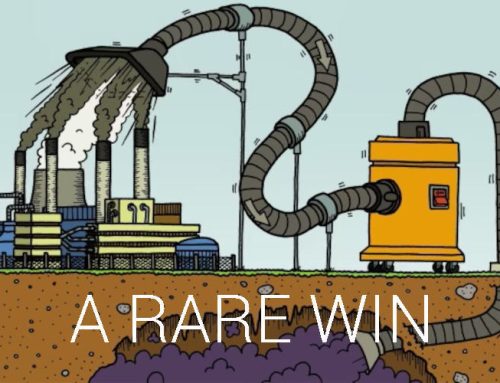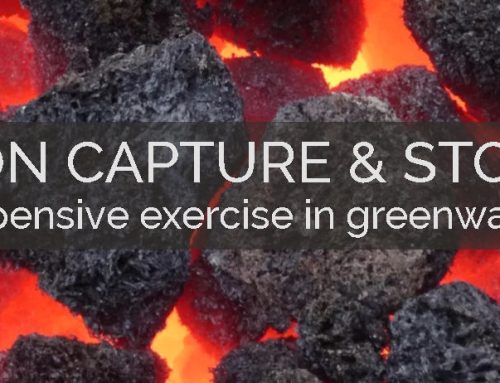Author: Robert Watson
rocky@rockflat.com.au
Keywords: Bio diversity, regenerative farming and gardening, soil profiles, crop rotation, organic fertiliser, kelp, composting, earth worms
REVERSING GLOBAL WARMING AT THE GRASSROOTS LEVEL | 4th February 2022
How to employ regenerative farming techniques in your own garden
Many of the techniques and principals that apply to regenerative farming/agriculture can be employed on a much smaller scale for suburban gardens and small acreages. In fact, many of the methods you probably already use are basically the same as used on a more “industrial scale on large acreages. For example, one of the most utilised regenerative farming practices is crop and grazing rotation. Crop rotation is the practice of planting different crops sequentially on the same plot of land to improve soil health, optimize nutrients in the soil, and combat pest and weed pressure.
For example, say a farmer has planted a field of corn. When the corn harvest is finished, he might plant beans, since corn consumes a lot of nitrogen and beans return nitrogen to the soil.
A simple rotation might involve two or three crops, and complex rotations might incorporate a dozen or more.
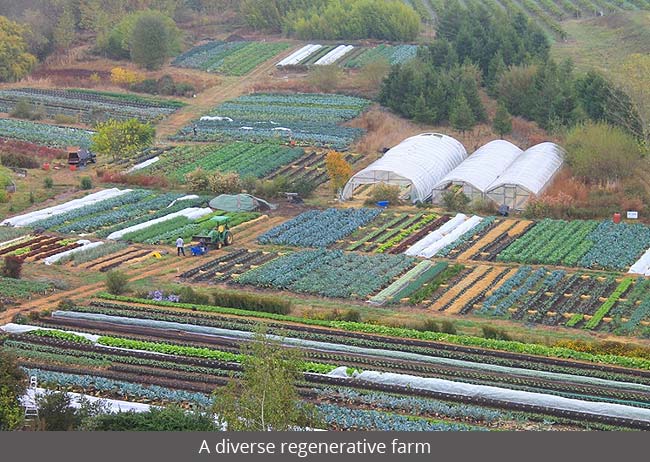 Since your garden is just a miniature paddock in which you grow things, it’s very easy to rotate different plants from one season to the next to help keep the soil healthy. A four season cycle in the garden could be something like broccoli a brassica, followed by broad bean a legume, then tomato a solanaceae and lastly comfrey as a green manure crop, which is not harvested but gently tilled back into the soil before seeding to add nutrients and organic matter to the soil – comfrey is considered one of the best permaculture plants with nitrogen, potassium and phosphorous that is readily taken up in the soil as the plant decomposes.
Since your garden is just a miniature paddock in which you grow things, it’s very easy to rotate different plants from one season to the next to help keep the soil healthy. A four season cycle in the garden could be something like broccoli a brassica, followed by broad bean a legume, then tomato a solanaceae and lastly comfrey as a green manure crop, which is not harvested but gently tilled back into the soil before seeding to add nutrients and organic matter to the soil – comfrey is considered one of the best permaculture plants with nitrogen, potassium and phosphorous that is readily taken up in the soil as the plant decomposes.
Some methods and benefits used in regenerative or sustainable farming are:
- Cover crops protect the main cropping plant, protects and eventually sustains the soil if used as mulch, or can be used as forage for grazing animals. Also increases the bio-mass.
- Minimal tillage helps maintain soil structure and health by letting the soil retain nutrients, including carbon taken from the atmosphere.
- Diversity of crop species disrupts the weed cycle as well as increases biodiversity.
- Little or no use of synthetic “off-farm” chemicals as pesticides, herbicides and fertilisers is possible in short time.
- Soil erosion is reduced and water quality and retention is improved.
- All leading to healthier and increased yields.
With a little effort and minimal cost home gardeners and owners of small acreages can use many of the same principals to both increase the yield of the garden, be it food or flowers, as well as reducing carbon in the atmosphere and providing an area of cooler, healthier earth.
A financial benefit also comes from discarding the mass-produced, expensive chemical additives that line the shelves of garden and hardware shops. Just have a look next time you’re in a Bunnings store – the variety and extent of the chemicals, designed for every conceivable garden application, is mind boggling. Many of these additives will do what they say on the labels – they’ll kill the weeds (along with the insects and those millions of beneficial creatures living in the upper levels of your soil), they’ll probably produce more flowers, bigger and more plentiful fruit and vegetables, but again at huge cost, and not only to your wallet.
Synthetic garden additives deplete the soil in your garden, making it necessary to artificially reinvigorate the soil as time goes on. The effect of using these products goes way beyond your property boundary in the air and carried off by the groundwater.
One example to illustrate the devasting effect some of these fertilisers have on the ecosystem is nitrogen fertiliser. Nitrogen is one of the most common of the artificial fertilisers. Nitrogen fertilisers utilising a synthetic form of nitrogen have had the enormous effect of increasing crop yields for over a century. Not only does the nitrogen release free radicals into the ecosystem, but also, the nitrogen not used by the plants destroys the organic matter in the soil thereby rendering the soil infertile after a few crops. The gas nitrous oxide is produced when nitrogen reacts with soil bacteria and this gas has an almost 300-fold more powerful warming effect on the atmosphere than carbon dioxide. Excess nitrogen is also washed away in groundwater, ending up in lakes, rivers and the sea and causing algal blooms and in extreme cases completely dead bodies of water, devoid of oxygen and supporting no living thing.
Following are some environmentally friendly methods I use in the garden to cool down my tiny paddock!
The three main elements required to grow plants are N, K and P – nitrogen, potassium and phosphorous. All the good artificial fertiliser products contain these in differing amounts and in various forms. However, all three elements are readily available as bio product or natural product, and cost virtually nothing after you initially set things up.
WORM FARMING
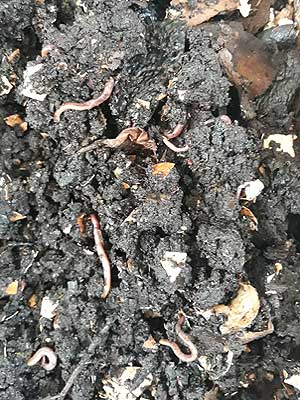 Worm farms probably produce the best all round fertiliser. Both worm juice, or worm wee, and worm castings are rich in N, K & P, along with many other nutrients and minerals. The main benefit of worm farm produce is the biological activity that starts in your soil as soon as the juice or castings are applied. The worms have an enzyme in their digestive system that allows all the nutrients and trace elements to become water soluble and thereby easier to be taken up by plants.
Worm farms probably produce the best all round fertiliser. Both worm juice, or worm wee, and worm castings are rich in N, K & P, along with many other nutrients and minerals. The main benefit of worm farm produce is the biological activity that starts in your soil as soon as the juice or castings are applied. The worms have an enzyme in their digestive system that allows all the nutrients and trace elements to become water soluble and thereby easier to be taken up by plants.
Worm farms are easy and inexpensive to set up, an even easier to maintain as the worm farm doubles as a garbage disposal unit! Most organic and compostable material can be fed to worms, however, avoid spices, garlic and citrus as the worms don’t like them, and don’t feed papaya or paw-paw flesh and skin to worms as it contains enzymes that digest the worms – n the islands, papaya is used as a meat tenderiser! There’s plenty of information on buying worms, setting up the farms and feeding the worms on the internet.
The beauty of worm farms and compost piles is that they are turn organic waste into rich fertiliser aerobically, without any pollution.
SEAWEED “SOUP”
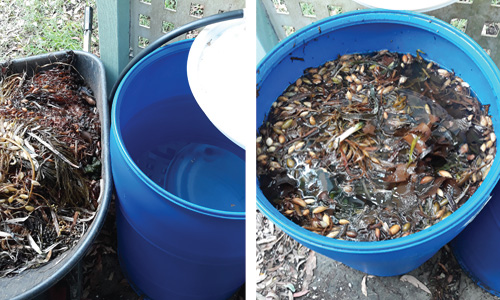 If I had to choose just one fertiliser it would be seaweed. Seaweed fertiliser is a “safe” fertiliser, meaning not only safe for the environment, but also safe for plants. The reason for this is that the average seaweed tea composition is low in nitrogen but contains many other minerals and trace elements that are sometimes hard to find in fertilisers. Some of these are manganese, chromium, copper, cadmium zinc, cobalt, nickel, iron, sodium, magnesium and potassium. Although there is little or no nitrogen, and nitrogen is important for plant growth, it is freely available from many other sources.
If I had to choose just one fertiliser it would be seaweed. Seaweed fertiliser is a “safe” fertiliser, meaning not only safe for the environment, but also safe for plants. The reason for this is that the average seaweed tea composition is low in nitrogen but contains many other minerals and trace elements that are sometimes hard to find in fertilisers. Some of these are manganese, chromium, copper, cadmium zinc, cobalt, nickel, iron, sodium, magnesium and potassium. Although there is little or no nitrogen, and nitrogen is important for plant growth, it is freely available from many other sources.
If you live near the sea, it’s easy to make your own seaweed “soup”, if you’re not near the sea there are plenty of brands of seaweed emulsions available – if a little expensive. Because I’m not far from the sea I go about once a year and collect wet, loose seaweed from the beach after a storm – usually about a 50-litre container full. The seaweed gets a fresh-water rinse to get rid of some of the sand and some of the salt, then steeped for about 3 months in a 200-litre (44 gallon) drum of fresh water. It’s a good idea to ⅔ fill the container with water first and let it sit for a few hours to evaporate the chlorine begore adding the seaweed. If the seaweed is chopped up into smaller pieces before steeping, the steeping time is less. Mix with water to the consistency of weak tea to apply to leaves and soil.
You can use the same process for steeping garden weeds to make another good fertiliser. In one way it’s more practical than putting the weeds into compost because the weed seeds can be strained out before you apply the weed ta to the garden. If the seeds go into compost there’s a good chance you’ll see them again sometime!
WARNING: for the first few weeks of steeping seaweed there is a very strong odour from the process, after which it settles down to smell just like the sea! Either vent the container fairly regularly or attach a ‘breathing’ bottle of water through which any accumulated gas can pass.
FISH EMULSION
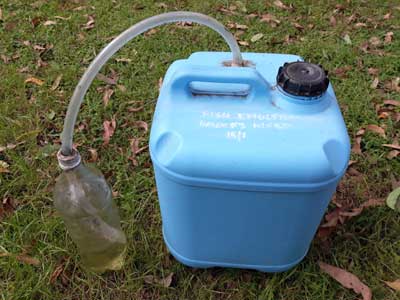 Fish emulsion will give your garden N, K & P (nitrogen, potassium, phosphorous) plus many other trace elements, minerals and enzymes including magnesium and calcium. The NKP ration for the average fish emulsion is about 4:1:1 so it’s fairly high in nitrogen. Both fish emulsion and worm castings/juice complement the seaweed soup which is lower in nitrogen.
Fish emulsion will give your garden N, K & P (nitrogen, potassium, phosphorous) plus many other trace elements, minerals and enzymes including magnesium and calcium. The NKP ration for the average fish emulsion is about 4:1:1 so it’s fairly high in nitrogen. Both fish emulsion and worm castings/juice complement the seaweed soup which is lower in nitrogen.
I usually make it in 20 litre containers and the recipe I use is quite simple with fish, molasses, yoghurt and water. Use while fish but chop them up before adding to brew. The molasses is the sugar portion of the recipe to advance the fermentation and it should be the non-sulphurated type. Yoghurt can be substituted with any form of bacillus – I use the liquid Yakult for convenience. Give the container a shake every few days during fermentation.
Because fermentation will produce gas the container has to be vented regularly – daily for the first couple of months or attach a breathing bottle of water and a tube – see image. A sealed container could explode without venting.
CHARCOAL AND WOOD ASH
 Because open fires are not so common any more charcoal and wood ash aren’t as easy to get hold of without buying it. One way the get a good supply of charcoal is to go into bush areas where the RFS or fire authorities have done burn-offs and there should be plenty of charcoal on burnt timber that has fallen to the ground.
Because open fires are not so common any more charcoal and wood ash aren’t as easy to get hold of without buying it. One way the get a good supply of charcoal is to go into bush areas where the RFS or fire authorities have done burn-offs and there should be plenty of charcoal on burnt timber that has fallen to the ground.
Charcoal in the garden or in agriculture is usually referred to as biochar and it is one of the most useful and helpful materials you can add to the soil for a number of important reasons. Charcoal is a natural carbon sequestrator, it not only captures the carbon, but it holds it for up to 50,000 years. Charcoal lowers soil acidity by raising pH, it decreases nutrient leaching as it holds the nutrients and plant microbes for slow release of long periods of time, thereby reducing the need for so much fertiliser.
Charcoal is best crushed into fairly fine gravel size pieces and can be added directly to the soil and raked in or added to compost for eventual use in the garden.
Wood ash is a source of potassium and lime and is therefore a good fertiliser – however, it should be used very sparingly if used straight onto the garden as it will produce lye and salt when wet. If it is put into compost the salt and lye will leach out before the compost is used. The best wood ash comes from burnt hardwood as it contains more nutrients and minerals than softwood.
COMPOST
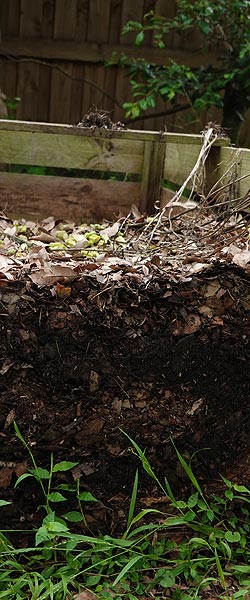 Beautiful, wonderful compost! What would we do without it. A good compost pile has a combination of nitrogen-rich “greens” like grass clippings and fruit and vegetable waste, and carbon-rich “browns” like dried leaves, sticks and branches. The two types of microorganisms that do most of the work in the compost pile are the aerobic microorganisms that require oxygen and consume organic waste and produce nitrogen, phosphorous and magnesium in the compost, and the anaerobic microorganisms that don’t require oxygen and are less efficient at consuming organic waste and produce foul-smelling hydrogen sulphide. Other organisms include worms and centipedes as well as a many others, depending on conditions in the pile.
Beautiful, wonderful compost! What would we do without it. A good compost pile has a combination of nitrogen-rich “greens” like grass clippings and fruit and vegetable waste, and carbon-rich “browns” like dried leaves, sticks and branches. The two types of microorganisms that do most of the work in the compost pile are the aerobic microorganisms that require oxygen and consume organic waste and produce nitrogen, phosphorous and magnesium in the compost, and the anaerobic microorganisms that don’t require oxygen and are less efficient at consuming organic waste and produce foul-smelling hydrogen sulphide. Other organisms include worms and centipedes as well as a many others, depending on conditions in the pile.
The main ingredients in my compost pile are grass clippings and dried leaves, with some dead plant material from the garden, occasionally a little seaweed and any spare crushed charcoal I have. Most of my food waste goes into the worm farm. Oxygen is important, as is moisture. Too much moisture will expel oxygen, but too little moisture makes the microorganisms a bit lazy. I add some water only during fairly dry weather, and sometimes some watered-down urine (4:1 water to urine). After any prolonged wet weather the compost pile can be aerated manually with a fork by turning it over to make some space for air.
Some other useful bio or climate-friendly products are homemade insect repellent for plants made from infusing garlic and chillies in water, straining it and using in a spray bottle when necessary. Use it sparingly because although the pests don’t like it, neither do the bees, ladybirds and beneficial bugs. I prefer to call it a repellent rather than a pesticide because this formula won’t kill them. Some of the pests that cause havoc with one plant or vegetable probably have a viable calling as a beneficial bug somewhere else!
Rock dust, which unless you’re good at grinding basalt rock into a powder is easier to buy. Chook and cow manure, which I always mix with some compost and any other organic material around the garden and aging it for two or three months before using.
With the use of one, some or all of these processes and fertilisers you will have a completely organic garden or farmlet. The produce will taste better, you’ll feel better, and best of all in the soil there will be a healthy thriving bio community ready to produce season after season.
This essay has focused on the home garden or small acreage, however most of the bio processes above are already being applied on a much larger scale in various forms as regenerative and bio-dynamic farming techniques are proving viable against the more traditional farming methods. A good introduction in two short videos is already on this website – let Bruce Maynard introduce you to “no kill cropping” here.



